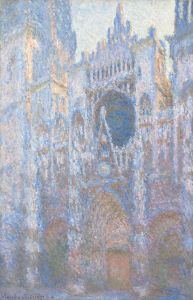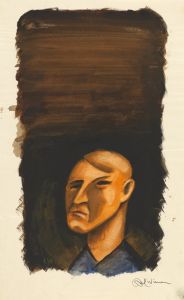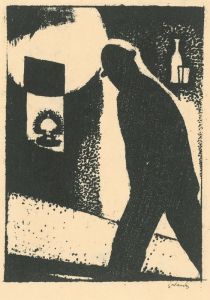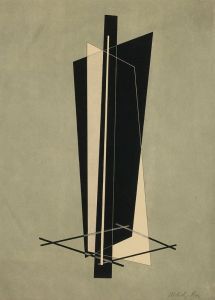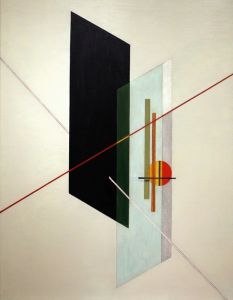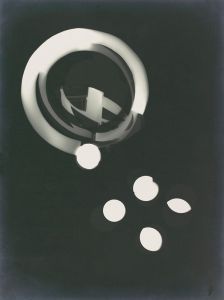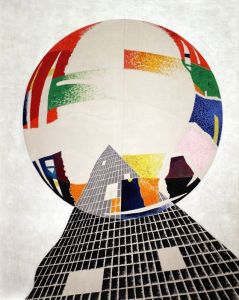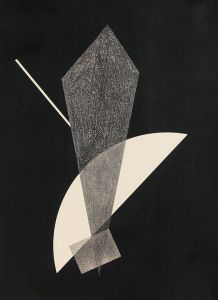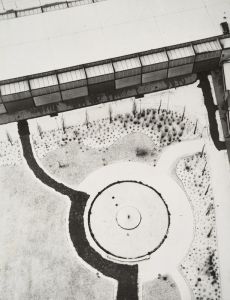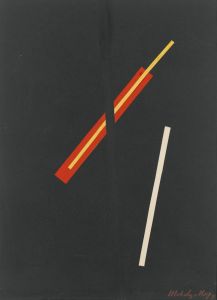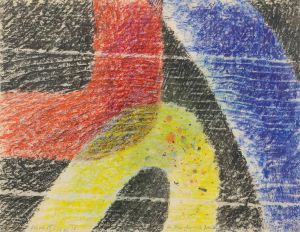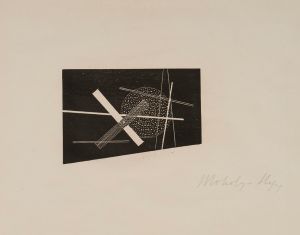
A 18
A hand-painted replica of László Moholy-Nagy’s masterpiece A 18, meticulously crafted by professional artists to capture the true essence of the original. Each piece is created with museum-quality canvas and rare mineral pigments, carefully painted by experienced artists with delicate brushstrokes and rich, layered colors to perfectly recreate the texture of the original artwork. Unlike machine-printed reproductions, this hand-painted version brings the painting to life, infused with the artist’s emotions and skill in every stroke. Whether for personal collection or home decoration, it instantly elevates the artistic atmosphere of any space.
László Moholy-Nagy was a Hungarian painter and photographer, as well as a professor in the Bauhaus school. He was highly influential in the fields of modern art and design, particularly known for his innovative use of technology and industrial materials in art. Moholy-Nagy's work often explored the relationship between light, space, and form, and he was a pioneer in the use of photography and photomontage in art.
"A 18" is one of Moholy-Nagy's works that exemplifies his interest in abstraction and the interplay of geometric forms. While specific details about "A 18" are limited, it is consistent with Moholy-Nagy's broader body of work, which often features a combination of painting, photography, and graphic design elements. His works typically incorporate a minimalist aesthetic, emphasizing clarity, precision, and the use of modern materials.
Moholy-Nagy was associated with the Constructivist movement, which emphasized art as a practice for social purposes and often incorporated industrial materials and techniques. This movement was part of a broader trend in early 20th-century art that sought to break away from traditional artistic methods and embrace the possibilities offered by new technologies and materials.
In his artistic practice, Moholy-Nagy frequently explored the concept of the "New Vision," which he described as a way of seeing that was informed by the technological advancements of the time. This approach encouraged artists to experiment with new media and techniques, such as photograms, photomontages, and the use of light in art. Moholy-Nagy's work often reflects this philosophy, as he sought to create art that was dynamic, innovative, and reflective of the modern world.
"A 18" likely embodies these principles, showcasing Moholy-Nagy's interest in abstraction and his commitment to exploring new artistic possibilities. His work is characterized by a focus on composition, balance, and the use of geometric shapes to create a sense of movement and depth. Moholy-Nagy's art often challenges viewers to reconsider their perceptions of space and form, encouraging them to engage with the work on both a visual and intellectual level.
Throughout his career, Moholy-Nagy was deeply committed to education and believed that art and design could play a crucial role in shaping society. He taught at the Bauhaus, where he influenced a generation of artists and designers with his innovative ideas and teaching methods. Later, he founded the New Bauhaus in Chicago, which continued his legacy of integrating art, technology, and design.
While specific information about "A 18" is limited, it is clear that the work is part of Moholy-Nagy's broader exploration of modernist themes and techniques. His contributions to art and design continue to be celebrated for their forward-thinking approach and their impact on the development of modern art. Moholy-Nagy's work remains influential, inspiring contemporary artists and designers to explore the intersections of art, technology, and society.





